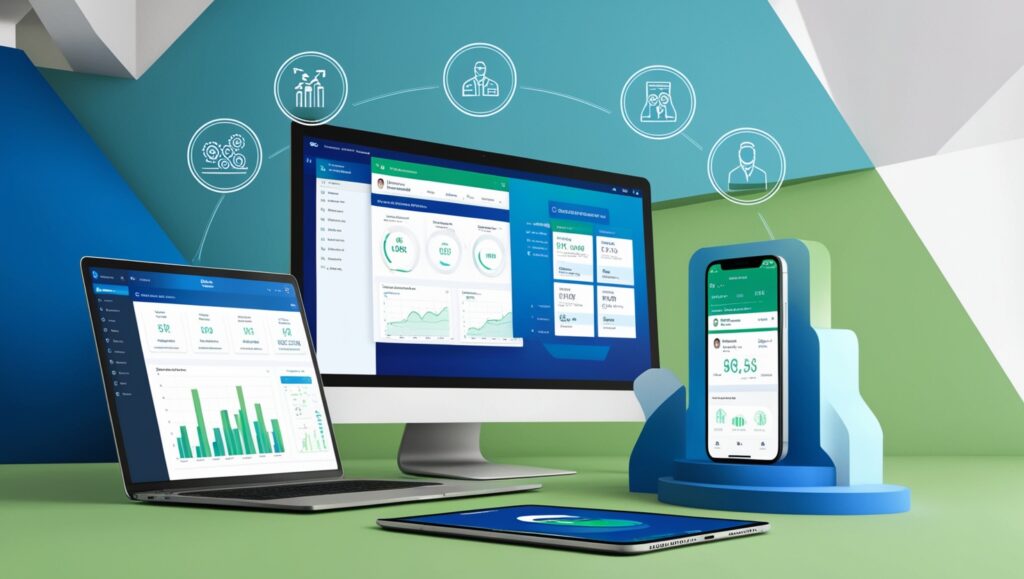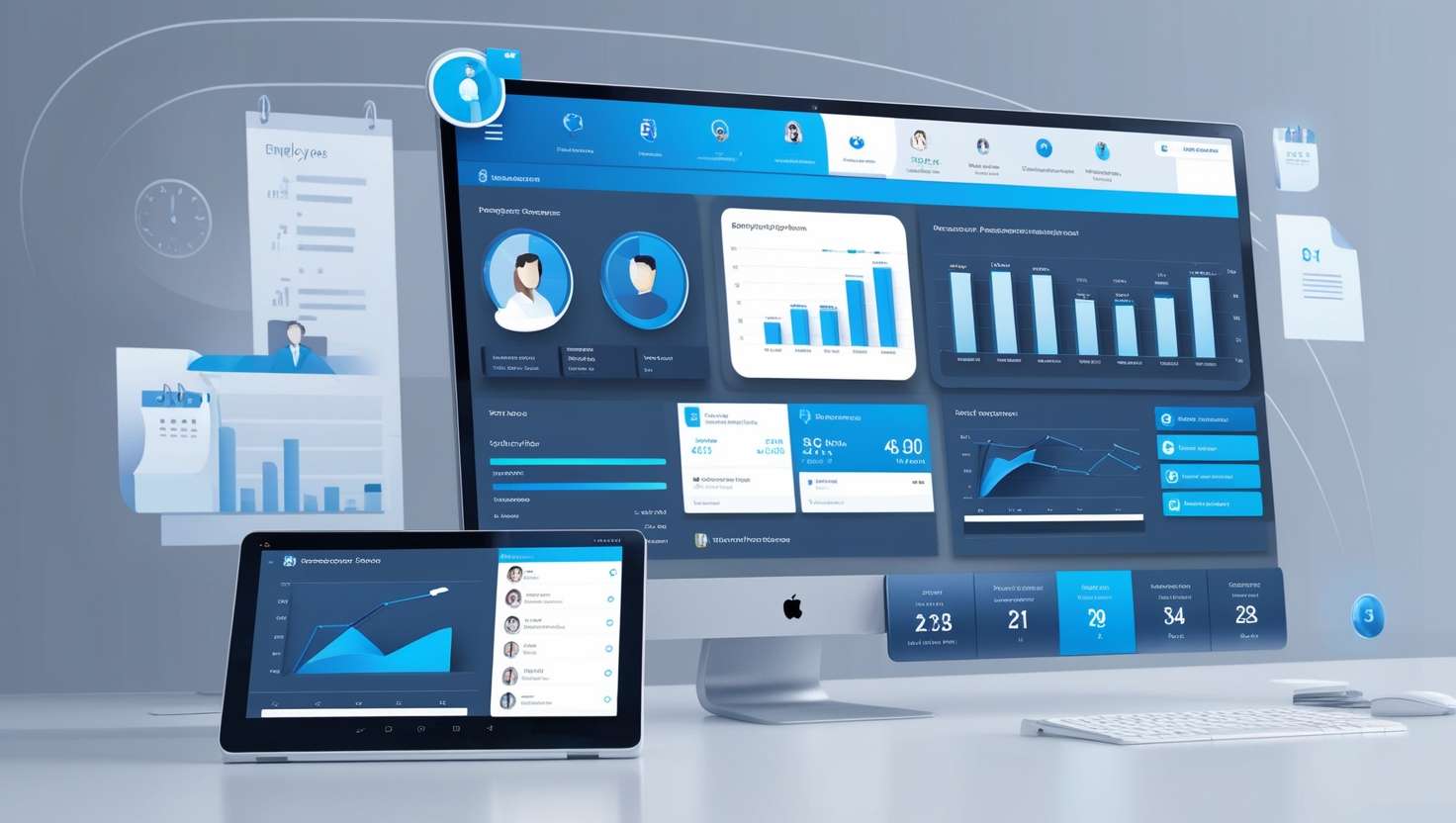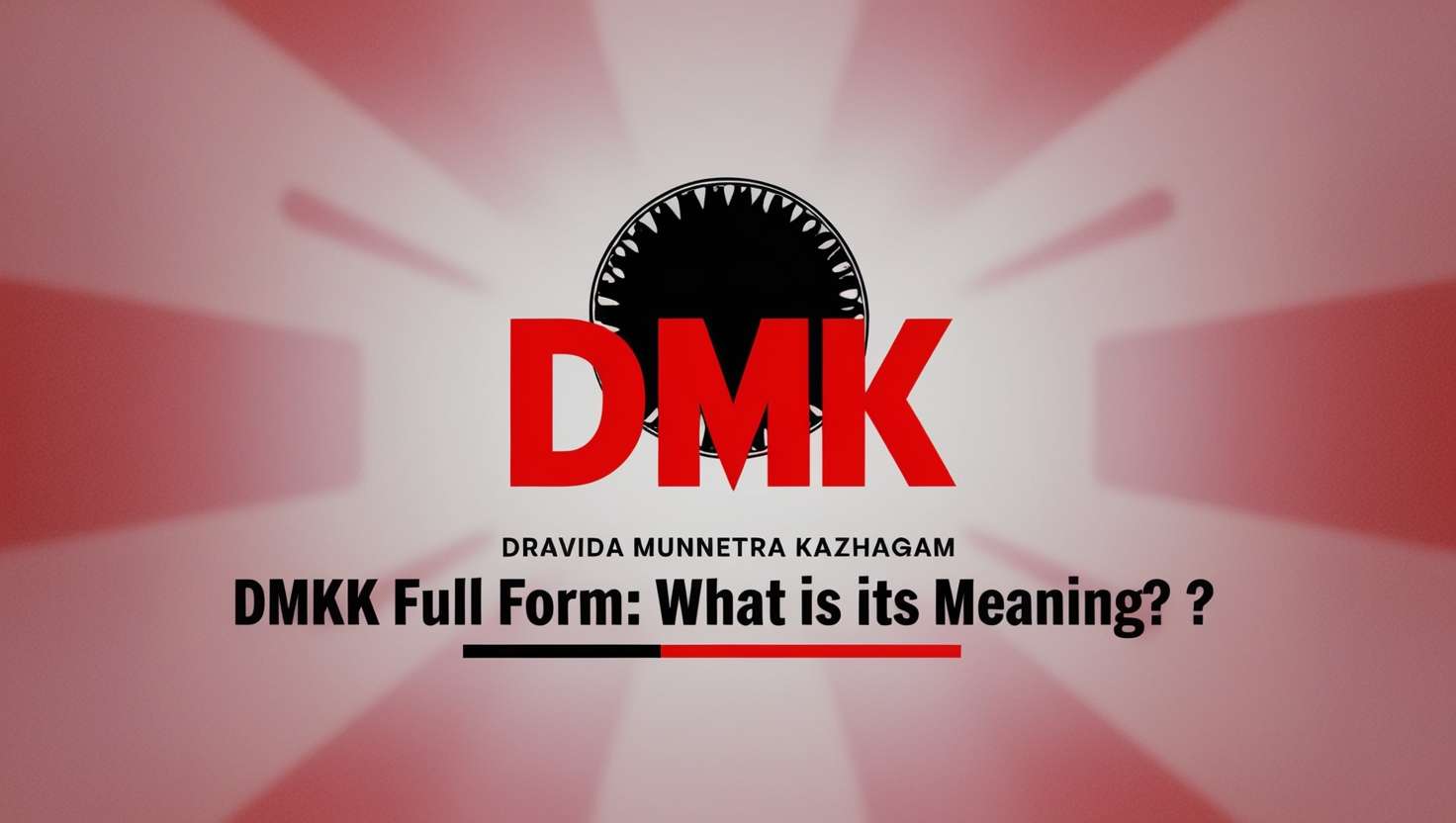What is Human Resources Management Systems (HRMS) ?
HRMS Stand for Human resource management Systems : has improved a lot since its early days when it mainly focused on keeping manual records and doing administrative work. With advances in technology, the tools and systems for handling employee information have changed significantly. This growth has resulted in the creation of advanced HRMS solutions. These solutions have changed the way organizations manage their workforce.
Technology improvements and the complex needs of businesses have led to big shifts in HR practices. Today, organizations need more than just basic management of employee data. They want solutions that help with strategic human resource management. This allows them to attract, develop, and keep top talent.
SEE ALSO : Etcetera: What Does Etc. Stand For?
Key Highlights
- HRMS streamlines HR tasks: Automating tasks like payroll and benefits administration allows HR professionals to focus on strategic initiatives.
- Using data to make smarter choices: HRMS analytics give us a peek into what’s happening with our team, helping us make decisions based on facts.
- Improved employee experience: User-friendly HR platforms enhance employee satisfaction with self-service features and easy access to information.
- Enhanced compliance & reduced risks: HRMS systems help ensure compliance with labor laws and regulations, mitigating organizational risks.
- Strategic talent management: HRMS supports talent acquisition, performance management, and employee development, fostering a high-performing workforce.
Introduction
In today’s competitive business world, good human resource management is very important for success. HRMS software has become a must-have for companies to manage their workforce planning effectively. This software offers a central place to manage HR functions. It helps organizations make processes smoother, work more efficiently, and make better decisions.
SEE ASLO : ADSL Unleashed: 9 Reasons Why Asymmetric Digital Subscriber Line Will Rock Your Internet World🚀
What Does the Shift from Traditional HR Methods to Modern Online Tools Look Like ?
The move from traditional HR practices to digital platforms has changed how companies handle their workers. Human resource management systems (HRMS) are now important tools. They help businesses to automate HR tasks, simplify processes, and improve efficiency.
A major change in this shift is moving from paper systems to electronic systems for managing employee data. By going digital, companies can store, access, and check employee information more easily. This results in better data accuracy, less admin work, and stronger data security.
Also, digital platforms have made it easier to combine different HR functions. Tasks like recruitment, onboarding, payroll, benefits administration, and performance management can now be handled in one system.
SEE ALSO : The Citizenship Amendment Act: What It Means for India’s Future
What Are the Key Historical Milestones in HR Technology Development ?
The growth of HR technology has seen important changes. Each change has helped create better human resource information systems (HRIS) that affect companies today.
In the beginning, HRIS mainly helped with basic tasks, like payroll and benefits administration. As technology improved, these systems grew to include more areas of human capital management (HCM). HCM placed a new focus on things like talent management, performance management, and employee development.
A key development in HR technology was combining HRIS with enterprise resource planning (ERP) systems. This connection helps companies connect their HR processes to their overall business activities. It does a lot of the work for you and helps avoid errors.
What Are the Core Components of an Effective HRMS ?
A robust HRMS encompasses several key components that collaboratively manage the employee lifecycle:
- Recruitment and Onboarding: Streamlines hiring processes and integrates new employees seamlessly.
- Core HR Data Management: Centralizes employee information and simplifies administrative tasks.
- Payroll and Benefits Administration: Automates payroll processing and benefits management, ensuring accuracy and compliance.
- Talent Management: Facilitates employee development, career planning, and performance evaluation.
- Performance Management: Supports goal-setting, performance tracking, and feedback.
- HR Analytics: Provides insights into workforce trends and supports strategic decision-making.
1. Payroll Management and Benefits Administration
- Payroll Management: Automates payroll processing, including tax calculations, deductions, and disbursements. Handles complex payroll requirements with accuracy and efficiency.
- Benefits Administration: Streamlines benefits management with centralized data, making it easier to handle enrollments, eligibility checks, and compliance reporting.
2. Talent Acquisition and Recruitment Processes
- Recruitment: Provides a unified platform for job postings, application tracking, and onboarding. Automates recruitment tasks to focus on attracting and retaining top talent.
- Onboarding: Automates administrative tasks such as offer letters, document collection, and training material access to ensure a smooth transition for new hires.
3. Employee Performance Management Systems
- Performance Management: Aligns individual goals with organizational objectives through tools for setting expectations, monitoring progress, and delivering continuous feedback.
- Features: Includes performance indicators, regular reviews, and 360-degree feedback to offer a comprehensive view of employee performance and development needs.
Comparing HRMS, HRIS, and HCM: What’s the Difference ?
Navigating the landscape of HR technology can be complex, especially with terms like HRMS, HRIS, and HCM often used interchangeably. However, these systems serve different purposes and offer varying levels of functionality. Understanding their distinctions is crucial for selecting the right system to meet your organization’s needs.
1. Human Resource Information System (HRIS)
Definition : HRIS is the foundational platform for managing essential HR functions. It provides the core tools necessary for handling administrative HR tasks and managing employee data.
– Primary Functions :
- Employee Data Management: Centralizes and maintains records of employee personal details, job history, and other essential information.
- Payroll Processing: Automates salary calculations, deductions, and disbursements, ensuring timely and accurate payroll runs.
- Employee Benefits: Looks after things like health insurance, retirement savings, and other cool perks for employees.
- Keeping Track of Work Hours: Checks how many hours employees work, who’s there, and who’s taking time off.
– Key Benefits :
- Efficiency in Core Tasks: Streamlines fundamental HR operations, reducing manual effort and improving accuracy.
- Regulatory Compliance: Helps ensure adherence to legal and company policies regarding employee data and payroll.
- Use Case: Ideal for organizations that need a reliable system for basic HR functions without advanced capabilities for talent management or strategic planning.
2. Human Resource Management System (HRMS)
Definition : HRMS builds upon the capabilities of HRIS by incorporating a broader range of HR functions. It integrates core HR operations with advanced tools for managing the employee lifecycle.
– Primary Functions:
- Talent Management: Includes recruitment, onboarding, and employee development, supporting the full spectrum of talent acquisition and growth.
- Performance Management: Facilitates goal-setting, performance reviews, and feedback mechanisms to align employee performance with organizational objectives.
- Learning and Development: Offers tools for tracking employee training, skills development, and career progression.
- Compensation Management: Manages salary structures, bonuses, and other forms of employee compensation.
– Key Benefits:
- Comprehensive Employee Lifecycle Management: Provides a holistic view of the employee experience from hiring through retirement.
- Enhanced Employee Engagement: Tools for performance management and development foster a more engaged and motivated workforce.
- Use Case: Suitable for organizations that require a more integrated approach to HR, with features extending beyond core administrative functions to include talent management and development.
3. Human Capital Management (HCM)
Definition : HCM encompasses the full spectrum of managing an organization’s human capital. It integrates HRMS functionalities with broader strategic components to align HR practices with business goals.
– Primary Functions:
- Strategic Workforce Planning: Supports long-term planning, including workforce forecasting and succession planning.
- Employee Engagement and Experience: Focuses on initiatives to boost employee satisfaction, retention, and overall experience.
- Advanced Analytics and Reporting: Provides deep insights into workforce trends, performance metrics, and predictive analytics for strategic decision-making.
- Global HR Management: Handles complex requirements for multinational organizations, including compliance with international labor laws and cross-border payroll.
– Key Benefits:
- Alignment with Business Strategy: Integrates HR practices with business objectives, facilitating strategic workforce management.
- Making Decisions Based on Data : Uses smart analysis to get useful tips for making big HR choices and getting the most out of your team.
- Use Case: Best suited for large organizations or those with complex HR needs that require an integrated approach to managing human capital, strategic planning, and global operations.
Choosing the Right System
Selecting the right HRMS is crucial for optimizing HR processes. Consider factors such as company size, industry requirements, budget, and essential features. Evaluate scalability to accommodate future growth and ensure compatibility with existing systems. Here’s a quick reference table for making an informed choice:
| Factor | Considerations |
|---|---|
| Company Size | Number of employees, locations, and departments |
| Industry | Specific regulations and requirements |
| Budget | Allocated budget for HR software |
| Features Required | Essential functions like payroll, benefits, talent management |
| Scalability | Ability to grow and adapt to changing needs |
| Integration | Compatibility with existing systems |
How Does HRMS Enhance Organizational Efficiency ?
HRMS greatly affects how well an organization runs. It does this by automating tasks and making HR processes smoother. As a result, HR professionals can concentrate more on important plans, ensure data is accurate, and boost overall productivity.
When HR personnel automate work like payroll and benefits administration, they save a lot of time. With less manual data entry and fewer mistakes, HR professionals can spend more time on strategic tasks. These tasks include talent management, employee engagement, and workforce planning.
- Streamlining Administrative Tasks: HRMS reduces the burden of administrative work by automating processes and centralizing information. This efficiency allows HR staff to dedicate more time to strategic activities.
- Enhancing Decision-Making with Data Analytics: Advanced analytics in HRMS provide valuable insights into workforce trends, enabling data-driven decisions. Predictive analytics help anticipate future HR needs, facilitating proactive planning and addressing potential challenges.

Key Features to Consider in HRMS Software
When selecting HRMS software, prioritize features that align with your organization’s goals. Essential features include core HR functions, talent management tools, performance management capabilities, and robust analytics. Ensure the system is customizable and scalable to meet both current and future needs.
- Customization and Scalability: The ability to tailor the HRMS to specific organizational needs and scale with growth is crucial. Customizable features and scalable solutions ensure the system evolves alongside your organization.
- User Experience and Accessibility: A user friendly interface (UX) enhances adoption and efficiency. The system should be accessible on various devices and accommodate users with disabilities, promoting an inclusive work environment.
- Integration Capabilities: Seamless integration with other systems, such as payroll and accounting, is essential for consistent data flow and accurate information. Look for HRMS solutions that offer industry-standard integration methods and pre-built connectors.
Strategic Advantages of Implementing HRMS
Using an HRMS brings many benefits to organizations. It goes beyond just automating tasks. It helps HR teams become important partners in the business. By simplifying tasks, improving data accuracy, and offering useful insights, HRMS helps HR play a vital role in a company’s success.
One major benefit is that HR can now focus on strategic goals. This helps HR move away from routine tasks and concentrate on things like talent management, employee engagement, and workforce planning. Because of this focus, HR can boost overall performance and build a more engaged and productive workforce.
- Improving Employee Engagement and Satisfaction: HRMS empowers employees with self-service options, fostering greater satisfaction and engagement. Features such as career development planning and feedback mechanisms demonstrate a commitment to employee growth.
- Achieving Compliance and Reducing Risk: HRMS helps organizations stay compliant with labor laws and regulations by automating compliance-related tasks and maintaining accurate records. This reduces legal risks and supports a positive organizational reputation.
What Are the Future Trends in HRMS Technology ?
The world of HR technology is always changing. New trends keep popping up. These trends can change how companies handle their people. It’s important for organizations to keep up with these trends. This helps them use the latest tools and stay ahead in talent management.
New technologies like Artificial Intelligence (AI), machine learning, and data analytics are being added to HRMS systems. This gives HR processes better automation and makes them more personalized.
| Trend | Description | Additional Insights |
|---|---|---|
| AI and Machine Learning in HR | AI and machine learning automate HR tasks, improve decision-making, and personalize employee experiences. | Predictive Analytics: AI can predict employee turnover and identify potential high performers by analyzing trends and historical data. |
| Recruitment Automation | AI tools automate candidate screening, scheduling, and create personalized experiences. | Chatbots: AI-driven chatbots can handle initial candidate queries, schedule interviews, and provide updates, improving the candidate experience. |
| Performance Management | AI and machine learning provide tailored advice, performance tracking, and development suggestions. | Skill Gap Analysis: Advanced algorithms can identify skill gaps and recommend targeted training programs, enhancing employee development. |
| Mobile HRMS Solutions | Mobile HRMS apps enable employees and managers to access HR information and services on the go. | Enhanced User Experience: Mobile apps offer a seamless user experience with intuitive interfaces and push notifications for timely updates. |
| Remote Work Integration | Mobile HRMS supports remote work by providing access to HR tools and information from anywhere. | Virtual Collaboration Tools: Integration with virtual collaboration tools enhances remote work efficiency and team connectivity. |
| Employee Self-Service | Mobile apps allow employees to manage personal information, view payslips, request time off, and access training materials. | Customizable Dashboards: Employees can personalize their dashboards to access the most relevant information quickly and easily. |
| Data Security and Privacy | Mobile HRMS solutions are designed with robust security features to protect sensitive employee data. | Multi-Factor Authentication (MFA): Enhances security by requiring multiple forms of verification before granting access to sensitive information. |
| Analytics and Reporting | Advanced analytics and reporting tools provide insights into workforce trends and performance metrics. | Real-Time Reporting: Provides instant access to critical metrics and reports, enabling timely decision-making and strategic planning. |
| Integration with IoT | HRMS solutions integrate with Internet of Things (IoT) devices for enhanced data collection and management. | Smart Devices: Integration with smart devices like wearables can track employee health metrics and work patterns, contributing to wellness programs. |
| Blockchain for HR | Blockchain technology is used for secure and transparent management of employee records and transactions. | Credential Verification: Blockchain can streamline the verification of employee credentials and certifications, reducing fraud and administrative burden. |
Conclusion
In conclusion, knowing about Human Resource Management Systems (HRMS) is very important for today’s businesses. It helps them manage HR tasks more easily. HR technology has changed from old ways to new digital platforms. This change affects how companies find talent, manage performance, and handle payroll. By picking the right HRMS software, which has needed features like customization, scalability, and integration, companies can make better decisions, boost employee engagement, and follow rules. Looking into future trends, like AI, machine learning, and mobile solutions, will further change HRMS technology. This will lead to better human resource planning and help organizations succeed.



